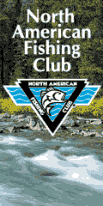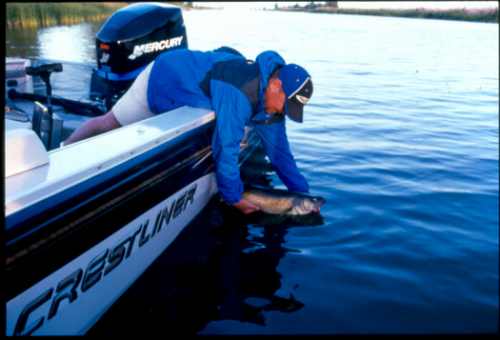
|
|

Free 90 day Risk free trial offer click here 
|
Right time to jig by Rick Olson Right time to jig. There’s a right time for just about everything, and
if you’re a jig fisherman, the time is now. If you’re not a jig fisherman,
you should be. Jigs are one of the most deadly, and versatile, tools available
to today’s walleye angler. Jigs can be cast, drug, swum, and even trolled.
The key is knowing when and where to use the appropriate technique. As
walleyes react to the cooking effects of fall, their metabolism starts
to slow down. Their activity level
Snap jigging involves a slow troll, or drift, and a long lined jig that is snapped, and allowed to settle back to the bottom. The key is to make sure the bait is getting back to the bottom, after the snap. To be sure, you’ll have to watch your line on the surface of the water as it pulls back toward the bait. As the jig hits the bottom, you’ll the see the line twitch and stop. After it hits the bottom, it’s time to make another snap, and so on, and so on. If you’re not getting to the bottom, you may be moving too fast, or using too small a jig. Jig size can range from a 1/8, to even a 1/2 ounce, depending on the conditions. Jigs should be tipped with live bait, like a small minnow. One of the top fall jigging baits is a smaller golden shiner, which can produce plenty of flash when it’s snapped. Fatheads and small chubs can also be effective, but the shiner is tops on the list. Larger minnows produce too much drag, and are too slow to drop back to the bottom. Good snap jigging rods have stiffer tips, which will give you more snap, and less pull, when you pop it forward. Another key is using a low stretch line, like Rapala’s Tough Fishing Line. When you have a lot of line out, stretch becomes more of a factor, and a low stretch line delivers more of your snap back to the bait.As the season progresses and water temps cool off, snap jigging starts to lose it’s appeal and traditional jigging becomes much more effective. Traditional jigging, like hovering over the fish and lifting and dropping a jig tipped with a minnow becomes deadly. The technique is called vertical jigging, and is the quickest ( and probably the most fun ), way to put fish in the boat. It’s fun because it’s all feel, and a good touch can mean more fish in the boat. The technique starts with a jig that’s big enough to stay in contact with the bottom, as you troll along ever so slowly, and walk your bait across the bottom. That means using jigs in the 1/8 oz. range, to even a full ounce, which seems like an awful lot of lead, but don’t let that bother you. In most situations, smaller is usually better, but not now. Now, a bigger jig can be a real advantage, as it will let you stay with the bottom, and give you an idea of it’s content. With a bigger jig, you get a more pronounced thump as it hits the bottom, and you can actually feel if you’re over rock, sand, or soft bottom. It’s also a great technique for getting comfortable with your electronics, and will help you to understand what your depth finder has been trying to show you. Achieving maximum feel starts with the right equipment, and includes spinning combinations in the six to six and a half foot range, loaded with six to eight pound test. Good vertical jigging rods have medium action rod tips, rather than softer, light action tips. Light action tips are too soft to get the same feeling delivered by a stiffer tip. Longer rods are too much too hang onto, and can cause undue fatigue over the course of the day. Light line, like eight to even six pound test, will let your jig drop quicker than with heavier line. In most cases, vertical jigging is done in areas where you have little to hang up in, and big fish can be fought with lighter line. A presence of snags, like sunken trees and trees and brush, might demand heavier line, like eight to ten pound test. Eight pound test is surprisingly strong, especially if it’s fresh, and you use good knots. Vertical jigging is a deadly “ catching method”, but is not the way
to locate fish. Instead, you’re better off doing some investigative work
with your electronics, and keeping your jig in the boat until you mark
a few fish. The key to late fall walleye success, is making the adjustments
necessary to keep old marble eyes interested in what you have to offer.
The thing to remember is the fact that their world is cooling off, and
slowing down. By giving them what they want, where they want it, fantastic
catches can and will be made.
Rick Olson
International Fishing Banner Exchange Please visit these site sponsors |
|---|---|
